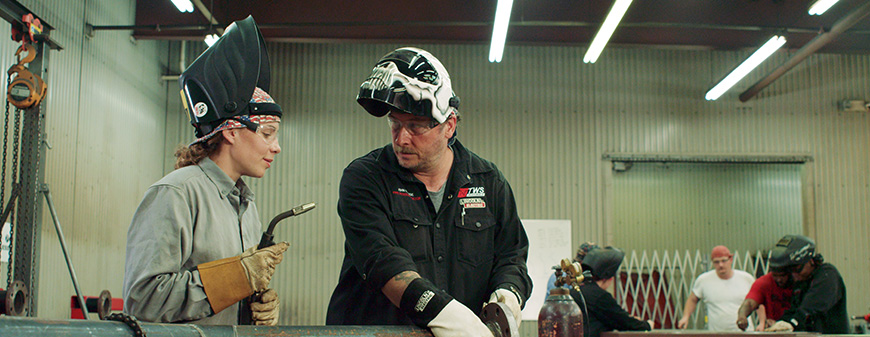TWS is a Great Training Option for Everyone
Learn more about how we can prepare you to advance your career.
Having a detailed understand of what stick welding is will come in handy if you work in industries like plumbing, oil and gas, construction, and manufacturing because of its ability to create strong, durable joints.
What’s a Stick Welded Pipe Fitting?
A stick-welded pipe fitting refers to the process of using Shielded Metal Arc Welding (SMAW), commonly known as stick welding, to join pipes and fittings, such as elbows, tees, flanges, or reducers. Stick welded pipe fittings are used to connect sections of pipe, redirect flow, or change the pipe diameter. Common types include:
● Elbows: For changing direction.
● Tees: For creating branch connections.
● Reducers: For transitioning between different pipe diameters.
● Flanges: For creating detachable connections.
The fitting and pipe are usually made of metals like carbon steel, stainless steel, or alloys.
Have You Considered a Career in the Skilled Trades?
Fill out the form to recieve a no obligation info packet.
What are Joint Types in SMAW?
Some of the joint types used in stick welding include:
● Butt Joints: The ends of the pipe and fitting are aligned and welded together.
● Socket Joints: The pipe is inserted into a fitting socket before welding.
● Flanged Joints: A flange is welded to the pipe and bolted to another flange.
What is Shielded Metal Arc Welding (SMAW)?
SMAW uses a consumable electrode (welding stick) coated with flux. The electrode creates an arc that melts both the electrode and the base metal to form the weld joint. The flux coating vaporizes during welding, creating a shielding gas to protect the weld pool from contaminants and forming slag to cover the weld for protection.
How to Perform Stick Welding on Pipe Fittings
Here are the steps to performing stick welding on pipe fittings:
Step #1: Preparation
First, clean the pipe and fitting surfaces to remove rust, grease, and dirt. Bevel the edges to ensure proper penetration and align the pipe and fitting precisely using clamps or tack welds.
Step #2: Electrode Selection
Choose a suitable electrode (e.g., E6010 for deep penetration or E7018 for structural strength and smoother welds). Match the electrode to the pipe material and thickness.
Step #3: Set Parameters
Adjust your welding equipment for the correct amperage based on the electrode type and pipe material.
Step #4: Perform the Stick Weld
Strike an arc to start welding, moving along the joint in a steady motion. Maintain the correct arc length (about the diameter of the electrode core). Use multiple passes if needed, especially for thicker pipes.
Step #5: Inspect the Work
Remove slag from the weld bead using a chipping hammer and wire brush. Inspect for defects like porosity, cracks, or incomplete fusion.
What are the Advantages of Stick Welding for Pipe Fittings?
There are many advantages of stick welding for pipe fittings. They include:
Versatility: stick welding is effective for a wide range of metals and pipe sizes.
Portability: stick welding equipment is relatively simple and easy to transport, making it useful in fieldwork.
Strength: stick welding produces strong, durable welds that can withstand high pressure and temperature.
Adaptability: stick welding works in various positions (flat, vertical, overhead), which is crucial for complex pipe configurations.
What are Some Applications of Stick-Welded Pipe Fittings?
Stick welding pipefittings is a common practice in the following:
● Oil and Gas Pipelines: Joining sections of pipe to transport fuel or gas.
● Plumbing Systems: Installing or repairing water supply and drainage systems.
● Industrial Plants: Welding pipes for chemical, power generation, or processing industries.
● Shipbuilding: Constructing and repairing shipboard piping systems.
Learn Stick Welding Today
The Professional Welder & Welding Specialist with Pipefitting programs at Tulsa Welding School starts by helping you know what it’s like to be a welder in interactive workshop courses and welding booths. You’ll be trained in structural, flux core, and pipe welding in as little as seven months. You’ll also be prepared to excel in job interviews and welding tests for various certifications.
Read about the types of welding careers you can pursue with your skills. Ready to start a Professional Welding program or Welding Specialist with Pipefitting program? Contact us today about our welding certification preparation program.







